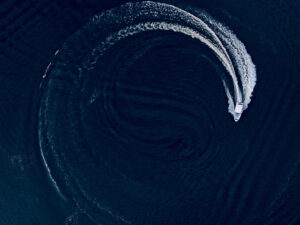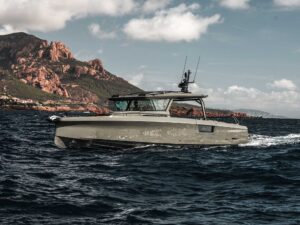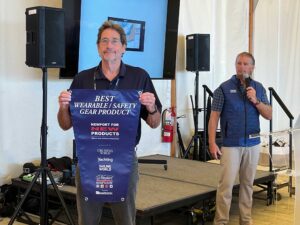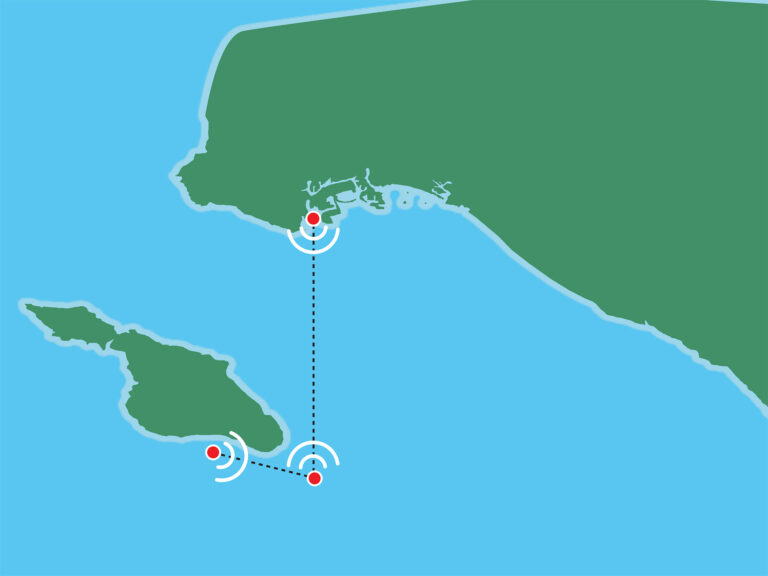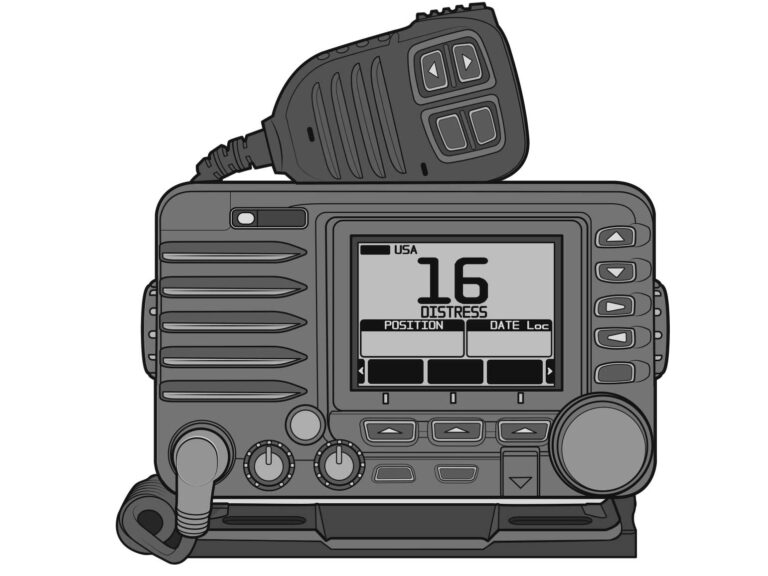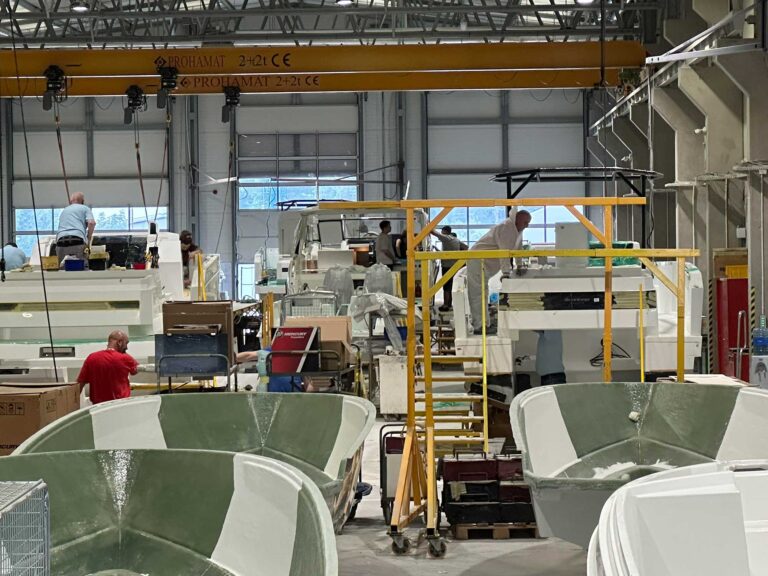Jeanneau, a mighty French builder of both power- and sailboats, saw an opening in the sea of sameness that epitomized the North American cruiser market 10 years ago. Almost before boaters knew they wanted these boats, Jeanneau established a new sense of style in luxury cruisers.
Fast-forward, and now I’ve put the Jeanneau Leader 10.5 through its paces. The Leader 10.5 showed itself as an outboard-powered pocket cruiser, and proved itself part walkaround, part express cruiser, part runabout and 100 percent fun.
The tall design gives the captain and crew a stellar view of their cruising waters while beneath it conceals roomy living quarters with the conveniences of a galley, head with shower, TV and more.


At nearly 10,000 pounds, the boat isn’t a lightweight, but it performs like a sport boat, thanks in part to its double-stepped hull and bustled transom. Steps, we know, ventilate the running surface, reducing drag and increasing performance. The step in the transom lets water reform and solidify before the gear case and prop enter the stream. That gives this Michael Peters design solid hookup that allows it to hold its ground in turns, avoiding the pitfalls of some step hulls—that of slipping out in turns and swapping ends.
The sporty, stable ride is enjoyed from luxurious seating, and much of it is convertible in nature, offering convenient options for accommodating your crew.
On the command deck, a three-station helm seat offers companionship while underway and a clear view of the seas. The helm itself is centered, an arrangement uncommon with American designs in all but center-consoles, which may have the helm at center, port or starboard. The effect gives access to the console from port or starboard, and that’s a welcome change from some designs that squeeze passing crew through a single passageway to port.
At the transom, seating wraps around to a portside transom entry door, eliminating the need to straddle a gunwale to board. On the port gunwale, there’s a foldaway bench that clears the entry when stowed.



The boat’s an entertainer and a crowd-pleaser, and to compare with it, Boston Whaler offers what it calls a summer kitchen with a grill, sink, refrigerator and drawers to complement the storage cabinet. Though that’s the closest comparison we could find to the Leader 10.5, there are many differences. The price for instance. Whaler’s 315 Conquest drains the piggy bank an extra $100,000 or more at a $285,187 base with comparable horsepower.
So, what does the Leader 10.5 lack? In terms of reliable construction, we don’t see them advertising unsinkable construction, but the hull itself has basic flotation, as advertised by premium builder Grady-White. Whaler uses custom hardware, and some is durable enough for Navy battleships. Hardware in the Leader is sourced, and cabinetry is laminate, not wood or the expensive veneer you usually find in high-end express cruisers. Yet Whaler too uses laminate in its cabinetry, albeit with cultured stone countertops.
Sure, the Leader is built for the more frugal buyer, but it doesn’t strike that price point by cutting back on durability and seaworthiness, as our tests revealed. Conditions in Tampa Bay were brutal, and we spared no throttle when it came to finding out what it could take. We returned it to port in the same condition as it came off the line, but with a couple more engine hours.

A quick look at the Leader’s profile confirms it’s taller than its American designs, and Jeanneau makes good use of that volume. The cabins below are entered to port of the helm, and three hardwood steps make egress easy. Once there, a laminate sole complements fine vinyl and precision cabinetry. A galley accommodates the shipboard cook. The V-berth converts easily to a dinette table for dinner or a card game. An aft cabin behind the steps offers comfortable lodging for a couple or rowdy kids. That’s an advantage earned from the application of outboards rather than the sterndrive power in most American pocket cruisers.
Altogether, the Jeanneau Leader 10.5 is poised to begin a trend in cruiser design that could well change the way we enjoy our boats. And if you think Jeanneau is a late comer to the party, think again—it was among the first in building fiberglass boats in 1958, and we expect the company to spot and execute the next new trend in hull design whether it be one, 10 or even 30 years from now.
High Points
- Bow thruster gives added confidence when navigating narrow ports.
- Our tester was equipped with a windlass, meaning the skipper could anchor from the safety and comfort of the command deck.
- Forward seating on the bow offered sunbathing options at anchor.
Low Points
- Wraparound style of the swim platform requires caution when docking because it protrudes from the topsides.
Price: $186,000 (with test power and hardtop)
Available Power: Outboard

How We Tested
Engines: Dual Yamaha 300 hp outboards
Drive/Prop: Outboard/Yamaha SWS II 15.75″ x 15″ 3-blade stainless steel
Gear Ratio: 1.75:1
Fuel Load: 75 gal.
Water on Board: 0 gal.
Crew Weight: 600 lb.
Jeanneau – Annapolis, Maryland; 410-280-9400; jeanneauamerica.com


